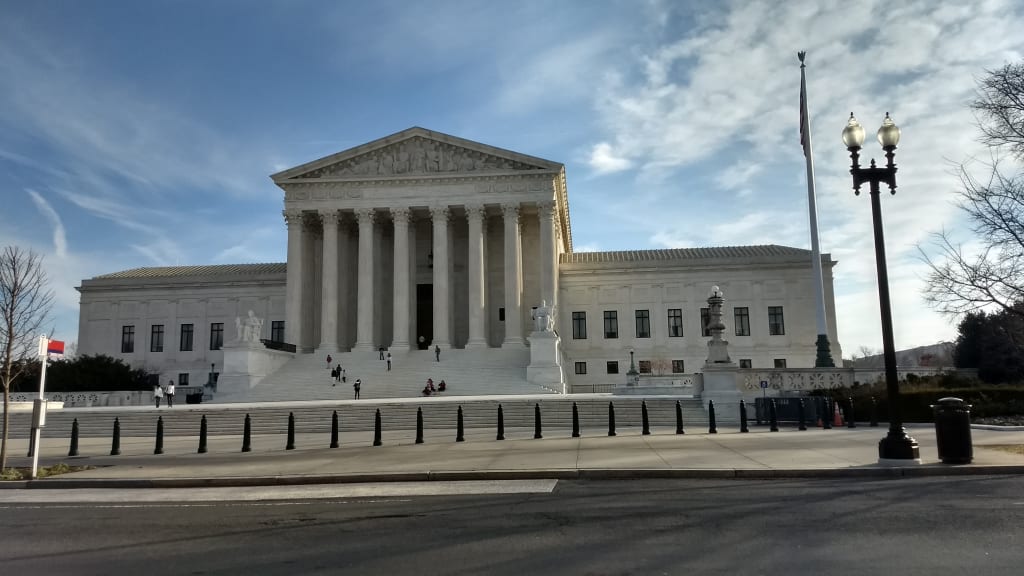
» KEY POINTS
- Just trying to pack the Supreme Court and force potentially un-Constitutional rules like term limits around justices is not enough to fix the systematic issues within the Judicial Branch.
- Only a set of Constitutional Amendments that fundamentally redefine the courts, realign their relationship with the other branches of government, and create a deference to the people they serve can bring about any real and lasting change.
- Modifications cannot be limited to the highest institution in the land; they must be deployed and enforced at all levels.

On Thursday October 14, 2021, a commission established by President Joe Biden via an Executive Order unveiled their draft findings. While the final paper was not expected to be released until November 14, 2021—and subsequently was delayed until at least December 15, 2021—every side had already expressed their grave disappointment.
The commission was created to evaluate potential changes to the Supreme Court, though not to make any recommendations. Republicans and other conservative-leaning groups scoffed at the very existence of the panel as a scheme to usurp the power of the Courts—a power they have spent the past two decades massaging to meet their tastes using every legislative tool at their disposal. But they should not have feared because the scholarly assembly found that:
- Increasing the size and membership of the Supreme Court would be unwarranted and would create a dangerous precedent;
- Term limits for Supreme Court Justices might be useful, but have no Constitutional basis and therefore could not be implemented;
- The court controls its own process and therefore can release rulings and opinions any way they see fit, including through the so-called middle of the night “shadow docket”; and
- Congress could change the nomination process for judges, but the Legislative Branch is too polarized to make that happen.
Democrats and other liberal-minded groups derided these findings and the process that produced them. With almost all of their dreams dashed, Brian Fallon—Executive Director of Demand Justice, an organization dedicated to changing the makeup of the Supreme Court—told The Hill:
The paralysis-by-analysis reflected here is exactly what you would expect from a commission made up mostly of academics, including several diehard conservatives who are fully content with the status quo.
Further, Chief Counsel for Demand Justice Chris Kang told CBSNews:
You wouldn’t have a climate change commission with climate skeptics. Here we have a Supreme Court commission with people who don’t think the Supreme Court is broken.
Unfortunately for Demand Justice and their supporters, this commission has a much more solid argument than they do. Though their heart, morality, and sense of fairness may be in the right place, the cold reality of our current law is against them. The reason for that is Demand Justice is simply focusing on the symptoms of a much greater problem and trying to resolve those instead of asking more probing questions—such as:
- Where do the rules of the courts even come from?
- Why is there a prosecution and defense?
- Why are juries a certain size?
- Why does court happen at certain times and places?
- What does a “speedy and public trial” even mean?
- Why is the appeals process the way it is?
- Why does it take years to work through the system?
- And so on and so forth...
The bottom line is that the Constitution is very light on details on how the Supreme Court and all “inferior” courts (as the Constitution likes to call all those layers below the Supreme Court) are supposed to function. While Congress has the right to create those “inferior” levels, that is where their sovereignty and responsibility ends. Nothing in the Constitution has told the Judicial Branch how to act and what it can and cannot do. As such they have made up all of their own answers to the above and much more, which in turn has put us in the quagmire we are in. Even the ability of “judicial review” to determine if a law is Constitutional or in violation of another law is an authority the Judicial Branch has granted itself and has no basis in the Constitution.
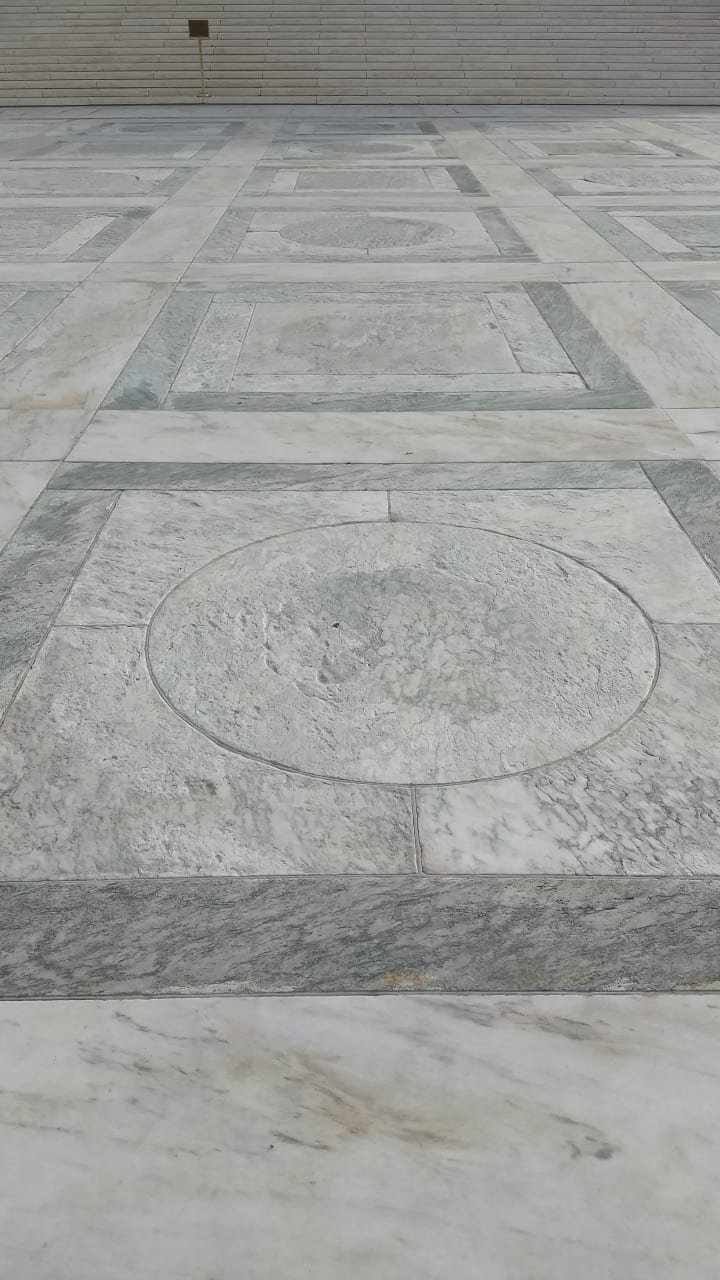
Therefore we can surmise that the silence of the Constitution is the real deterrent to progressive change within the Supreme Court and all echelons below it. If we want a better court system, the only way we can improve it is with a set of Amendments to the Constitution of the United States.
♫ YOU DON’T WANNA CHANGE THE WORLD LIKE YOU SAY
The problem we are really trying to resolve is the politicization of the courts. Attempting to just add members that lean towards a certain set of beliefs actually has the opposite impact because—as the commission noted—“Court expansion is likely to undermine, rather than enhance, the Supreme Court’s legitimacy....” As such, we have to take a different approach in order to minimize the impact of politics. Please note that this is not “eliminate” because that is impossible; but mitigation is well within our means. We can start that by first adding an Amendment to the Constitution that defines how the various layers of the Judicial Branch look:
The Trial of all Crimes and civil pursuits, except in Cases of Impeachment, shall be presided over by a Panel of Judges. The Panel shall consist of an odd number of Judges. The lowest inferior courts shall consist of three Judges, the appeals courts shall consist of five Judges, and the Supreme Court shall consist of seven Judges.
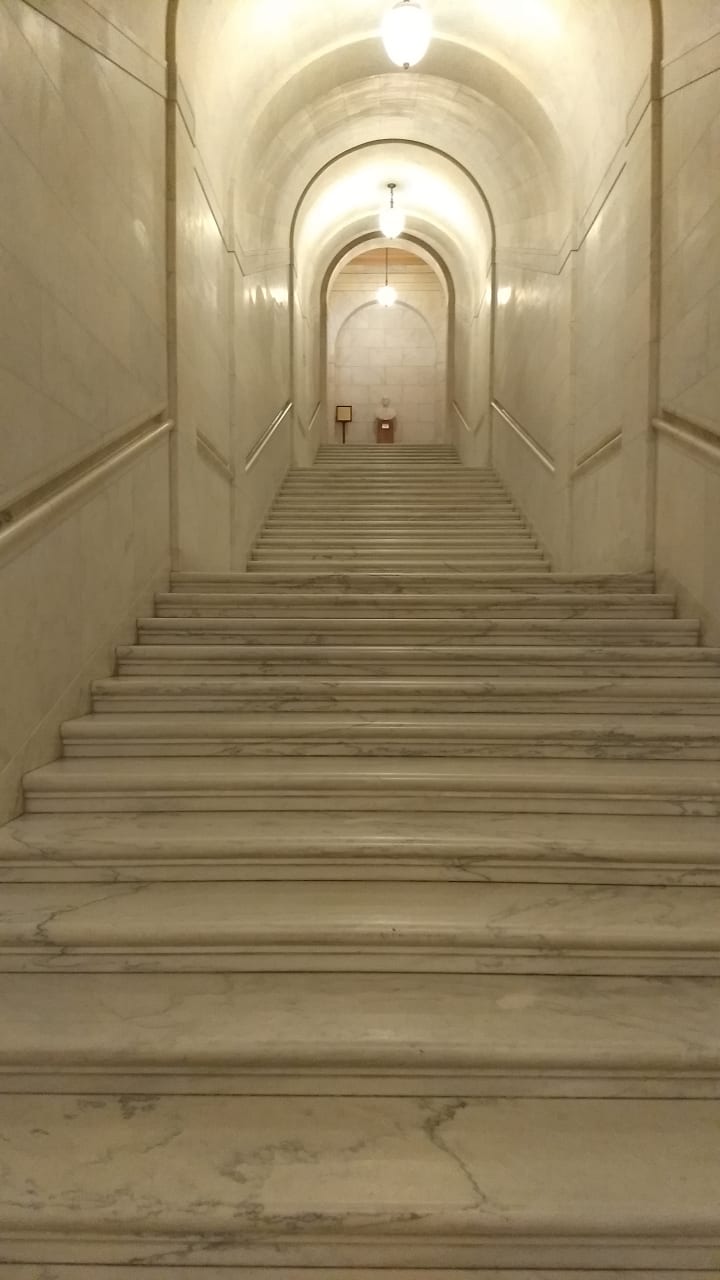
Here, we have simplified and solidified what should be expected of any level and eliminated much of that political interference. Instead, we break it down into a few easy levels with an odd number of judges in each. In the lowest level—where it is important to note that some courts are specialized in specific topics—the courts would expand from a typical single judge to instead have three. In the middle appeals layer, everything would be standardized with five judges. While this does not particularly address how appeals work today, it does force going to a full appeals court instead of an intermediate level before the full panel that currently exist, thus speeding up the process. Finally, the Supreme Court would cap out at the seven-judge panel.
These maximums, though, are only the beginning of several necessary limitations to make the courts closer to impartial while also keeping the working groups to a reasonable enough size. How then, though, if we have these limiting sizes of the courts do we then enforce what we are looking for? After all, within the Federal system the President nominates judges and the Senate confirms them, so they could still pack these positions any way they desired. For that, we will need several more Amendments:
All Judges shall be in a common Pool by area of the court or by type of court as determined by Congress.
First and foremost is the new concept of a “Pool” of judges. Instead of assigning judges directly to a seat, they would instead be part of a “Pool” that is part of an “area”. For instance, there is a court that focuses solely on bankruptcy, another on patents, and others that are just general concerns but are separated by geography. These would be the various “Pools” created for each type of inferior, appeals, and Supreme Court—the latter being only one, but worth noting as its own “Pool”. Still, it cannot end there:
Each Panel of Judges shall be filled from these Pools; shall share cases except when a substitute is needed due to a conflict of interest, movement to a different Pool, personal leave, death, retirement, or any other reason determined by Congress;
The Pool must consist of more Judges than necessary to fill Panels in order to have Judges in reserve in case a substitution is necessary.
Think of it this way: perhaps there are 15 “inferior” courts that would require 3 judges each. In total, that means we would need 45 judges. We should then have a “Pool” of, say, 50 judges available so that we can assign the 45 judges we need and keep 5 in arrears for when a substitute is needed. That may happen because there could be some type of conflict of interest or the judge had to leave for whatever reason (i.e., illness, vacation, death, or anything else that may come up). Reasons beyond what is listed in the Amendment would be determined by Congress as the check, but the idea is that an alternate should be able to be pulled in when necessary so that there is always a full “Panel”. Currently in the appeals and Supreme courts, when a judge recuses themselves there is no one to replace them, and this can end up with an even number and a tie vote.
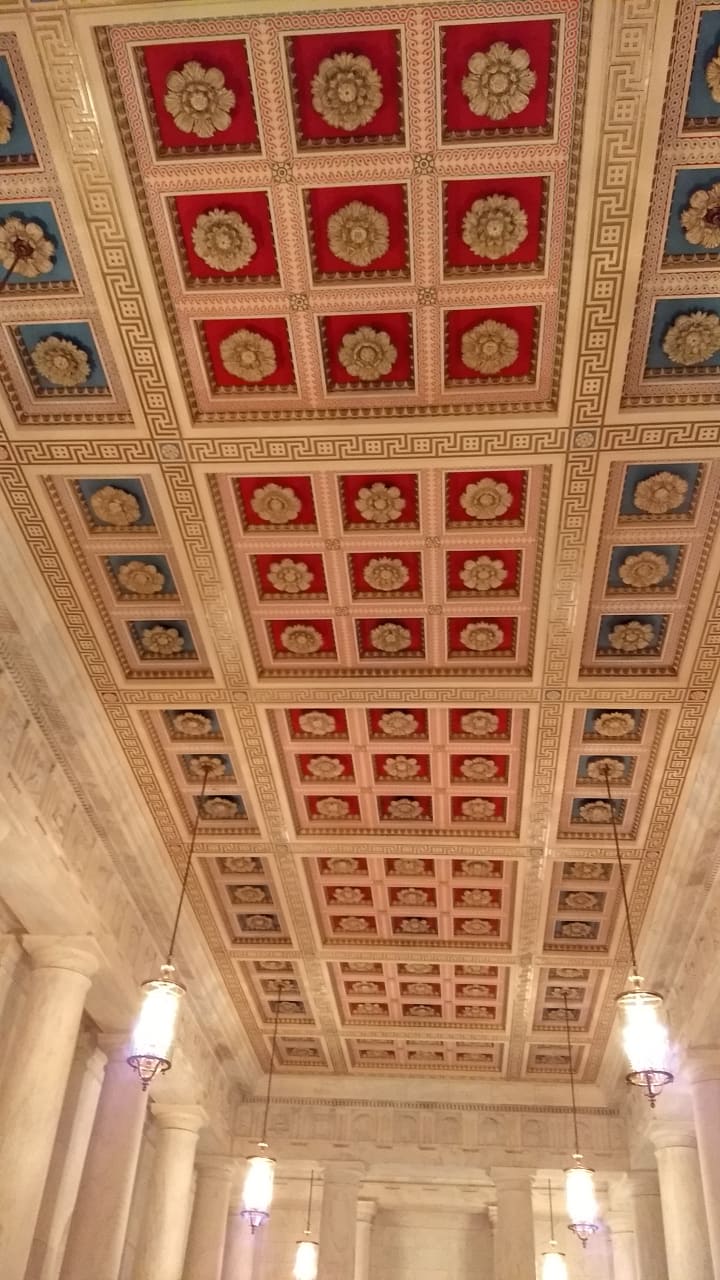
Now where this gets particularly interesting is how judges would be assigned to a “Panel”:
Assignment from the Pool to a Panel shall be at random in a method determined by the President.
Here is the beginning of the end of gamesmanship. Though the President would control the methodology, that is just a check on the system to make sure the Judicial Branch is not controlling it themselves. If people felt the procedure was not truly random, they would have a basis to sue via a violation of the Constitution.
With randomness, nevertheless, we will not know which judges are going to end up on a “Panel”. If we take the Supreme Court as of January 2022 and assume our “Pool” would continue to be just the same 9 Justices, then we could end up with any combination from “4 Conservatives and 3 Liberals” to “6 Conservatives and 1 Liberal”. On the other hand, if President Biden and the Senate added 4 more like-minded people to the “Pool”, then the “Panel” could end up being any combination starting at 7 Liberals down to just 1 with all other positions filled by Conservatives. Even if each President/Senate combination kept adding in additional members, the randomness would not guarantee a preferred outcome.
Yet allowing each successive administration to keep adding judges to the “Pool” would create an untenable situation. There needs to be limits on service in order to continually sweep away the more politically charged appointments. This, of course, would come through further Amendments:
Each Panel of Judges shall serve for a term of five years.
At the end of a five-year term, Judges are to return to the Pool for re-assignment or moved to another Pool and may not again serve in the same physical or specialized area.

With this component, a judge would serve a 5-year term with the rest of their “Panel”. At the end of those 5 years, everyone on a “Panel” would return to the “Pool” for random re-assignment. Further, that same judge could not again serve in the same physical or specialized area. In the case of our Supreme Court Justices, that would mean that they would be done with the highest court in the land after a single 5-year cycle, unless they had only been sitting in waiting as a substitute.
And this extends much deeper than just the Supreme Court. For instance, if a judge served in bankruptcy court, they could no longer be on that same court and have to move on to somewhere else. If it is desired to make a judge an appeals or Supreme Court justice, once approved by Congress they might be moved into those “Pools”. But if they are staying in their assigned “Pool” and the “Pool” is more general or part of appeals, they must then move to a different physical area.
Between the randomness of assignments and being forced to move on to a different physical district, no court area could have a certain style to it that lawyers could use to game the process. Today, lawyers file their cases in specific districts that they feel are more open to their arguments. This would reduce that by having a complete re-shuffling every 5 years. Yet this is not nearly enough; there needs to be one final limit on a judge’s tenure:
A Judge may only act as a permanent member of four Panels over the course of the Judge’s service.
Since each “Panel” times out at 5 years, this Amendment means a maximum of 20 years serving in the courtroom. With the randomness from before, a judge could end up in 4 panels in a row or no panels ever or any combination in between. It is not something the judge should have control over, nor any other member of the government. Here we have created the final sweep out of any sitting judge, very similar to the term limits some have suggested.
♫ YOU’VE PLAYED BY THEIR RULES, NOW IT’S THEIR TURN TO TRY
However, this is just the beginning of the process. In order to further reduce politicization of the Judicial Branch, we must put their self-appointed power in check. As the courts are now, they act almost as the single endpoint to all questions—far from the checks and balances of having two other co-equal Branches. While there are already Constitutional methods for the other Branches to hold the Judicial Branch in line, they must be expanded to make sure the Courts do not step over it:
Congress shall have the ability to create law that governs the proceedings of the Supreme Court and all inferior federal courts. This includes, but is not limited to, designating where trials may take place, how long a person may be detained before trial, how much time may be spent on arguments, and how long trials may proceed.
Before, we asked the question of what a “speedy and public trial” even is. Currently, the Judicial Branch has decided it for themselves, and that answer is a process that is excruciatingly slow and debated behind closed doors. Certain legislatures pass laws that cause immediate harm, yet the courts refuse to act until the damage is done—sometimes permanently—and oftentimes release those decisions in the middle of the night (the aforementioned “shadow docket”).

This Amendment would explicitly give Congress the ability to make decisions on how the courts should function so that they cannot continue to go off on a rogue process. If Congress says each witness has 10 minutes to testify or that the prosecution and defense will be held to a clock like in chess, then that is their prerogative. In the same vein, if Congress says that once someone has been sued civilly or arrested criminally that the trial must begin within a week, then that is what should happen. Just as Congress is to work for the people, so, too, are the courts supposed to do the same. The Supreme Court is still inferior to the people of the United States, and the will of the people should be reflected in how they operate.
This Amendment is open and gives great leeway, but also allows significant change. If something is not working out, the system can be updated easily by Congress. With this Amendment, the courts would no longer be able to run (or slowly trot) amuck and expansive judicial reform could happen much more easily. But the Legislative Branch is not the only one that should have powers over the courts; so, too, should the Executive Branch:
The President of the United States may order the Supreme Court or the appropriate designated inferior federal court to start a trial within the timeframe decreed by Congress when the court is in session, so long as the Supreme Court has not already ruled on the issue at hand.
As an expansion from the previous Amendment, there are times when the courts just sit on cases because they do not want to get to them in the current session. This can be massively frustrating for those who created the laws and those who enforce them because they have done their part while the last step in the process is refusing to do theirs. Delays like this can go on for years. Thus, should Congress choose, they could give the President the ability to make sure a case gets on the docket within, say, 30 days. That way, if the issue were pressing or involved a Constitutional question that must be resolved, the process could be pushed ahead within whatever other limitations Congress creates for the courts.
At the same time, there have to be limitations. If the Supreme Court has already ruled on a particular subject, the President cannot force their hands. For instance, the Supreme Court had previously ruled that abortion access was legal and Constitutionally protected within the entirety of the United States. Since that was the law of the land, historically* each time a State passed an anti-choice law the federal courts immediately put it on hold and the appellate courts would rule in favor of the plaintiffs fighting against these laws. The decision had already been made and the law was clear.
[ * “Historically” being the operative word because—as of the time of this writing—the “novel” Texas law that used a vigilante bounty system instead of State power had been allowed to remain intact while the arguments worked their way through the system. Because of this ruling, some States began to follow suit with similar laws while others like California planned to use the reasonings to apply it to gun-rights.
Further, while this book was preparing for publication, a draft opinion of the Supreme Court leaked showing that the majority of the bench was prepared to overturn Roe v. Wade and leave abortion access decisions up to each individual State**.
{** On June 24, 2022, that leaked opinion became the actual one with largely the same language. However, that still does not change anything in relation to the arguments presented here, only reinforcing why they are necessary.}
Since both are ongoing concerns, we will have to leave them aside for the time being and focus on how to make a system that does not allow radical lifetime appointees to create and destroy rights on a whim. ]
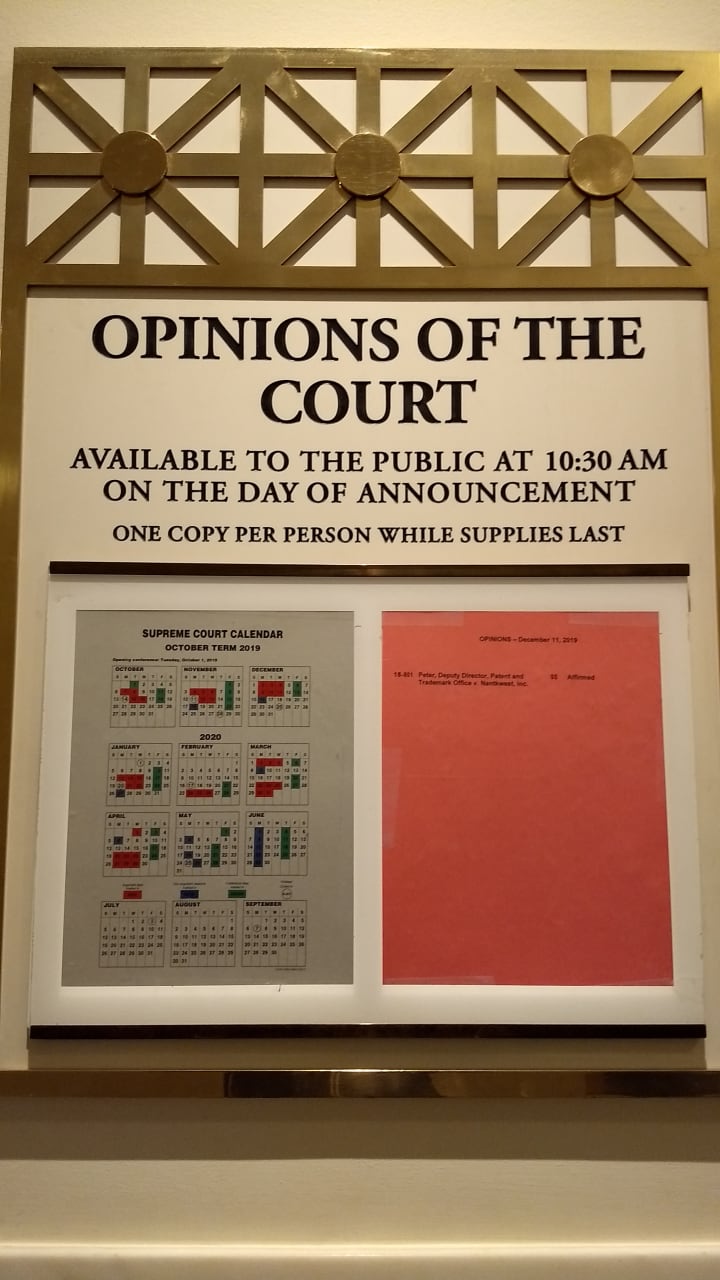
The hope of these groups is to make it to the Supreme Court and re-raise the discussion again. And let us be clear: there are times when getting back to the Supreme Court is necessary to overturn a poor decision. For instance, in 1883 the Supreme Court ruled against Tony Pace for the crime of being a black man romantically linked with a white woman in Alabama where the State created a law that said the two could not be married. The successful argument was that since the law applied equally to black and white people that it was not discriminatory. It took until the 1967 case in Loving vs. Virginia for the Supreme Court to overturn their own handiwork and say that State-sponsored racism cannot be argued as an interest of the government, no matter the “fairness” of the application of the law.
Still, there may be abuse within the Judicial Branch itself, and there needs to be an enforcement mechanism when the courts are in bold defiance. Luckily, we already have an apparatus to do that which just needs a bit of expanding:
Judges on the Supreme Court and inferior federal courts shall be removed from Office on Impeachment for, and Conviction of, Treason, Bribery, abusing the powers granted by the Constitution and law, failure to follow the procedural law as set by Congress, failure to start a trial when ordered by the President, or other high Crimes and Misdemeanors.
The wording here is almost exactly the same as what is written for the Executive Branch in the existing Constitution, with the additions of abusing power, failure to run as Congress has set by law, or failure to start a case under the direction of the President. The Constitution already covers that impeachment can only be started in the House of Representatives and tried in the Senate, and the only punishment is removal from office if voted guilty. This gives the Legislative Branch the ability to fully enforce all these new powers granted by these Amendments, but still maintain a high threshold in order to do so.
♫ YOU GOTTA KEEP ’EM SEPARATED
Just because we desire for limitations on the powers of the Judicial Branch to be put in place, it does not mean they do not need an expansion of strength in other areas. The important part is keeping walls between each Branch of government and making sure none holds complete sway over the others. For that, we’ll need some additional Amendments, starting with one last removal of a self-granted ability:
When standing in judgement of a law or lack thereof, neither the Supreme Court nor any inferior court may create law, modify the meaning of existing law, or remove existing law.
The Supreme Court or the designated inferior court must send the law or need for a law back to the appropriate legislature—whether that be Congress or the legislatures of a State or Territory—to create, modify, or remove the law entirely.
Here, we talk about “standing in judgement”, which in this case means when a trial comes along that challenges a law (or lack thereof), we lay out that the courts cannot create their own law to fix or fill in the gaps. Instead, the courts would always have to send orders back to the legislature from whence the law originated and the law must be fixed there. Of note, this also forces legislatures to write law to remove items officially instead of having them just being stricken by the courts. It is a line in the sand that only legislatures can create, modify, or annihilate law.
While a barrier is needed that stops the Judicial Branch from creating law because that is not their job, the courts—as discussed in the prior chapter—should have the ability to compel the legislature to create law based upon their discoveries. If the courts find that the law is lacking in a situation or the law as written has flaws, then the courts should have the ability to demand that the law-making body itself revisit and fix this. However, the Courts need a tool to force them to do anything.
Any order by the Supreme Court or delegated Federal Court to create new law or modify existing bills and law must be done within the timeframe designated by the Court.
The reason these controls need to be specifically laid out in the Constitution is because some would argue being forced to vote for something one does not believe in as induced “speech”. Since the 1st Amendment grants the freedom of speech to everyone, a separate part of the Constitution with equal weight would be needed to override that precise idea. With this Amendment, being a member of government restricts rights enjoyed by the masses. Therefore, here, the legislatures must vote and come to a solution or face the potential wrath of the courts. But what would happen if the legislatures just ignored the courts? For that, the Judicial Branch needs some teeth:
Should the Supreme Court or a designated inferior court send to Congress or the legislature of a State or Territory a demand for the creation, modifications, or removal of law within a specific timeframe and criteria, and the legislature does not act in accordance with the orders of the Supreme Court or designated inferior court, the Supreme Court or designated inferior court may hold any or all members of the legislature in contempt and implement any procedures and penalties as defined by law.
Here begins progress! Congress and State/Territory legislatures act with impudence because there are no personal consequences. It is nice that someone wants to serve our government, but that does not give them carte blanche to just do anything they desire. Today, though, that is exactly what happens as it does not matter what legislators do or do not do since the biggest consequence they may face is not getting re-elected.
With this Amendment, the Judicial Branch would have some real power over the Legislative one in that they could fine, imprison, or order both on the members of Congress or the legislators of the States/Territories for refusing their direction. It is still at the discretion of the courts to decide if and how much they want to implement this, and it means that members of Congress and the State/Territory legislatures face the exact same rules as regular people—which is precisely what they are. Congress defined “contempt”, including how it can be implemented and what the penalties are. Why, then, cannot the same rules apply to them?
And these controls and power of the Judicial Branch should not end here. Congress and—especially—State/Territory Legislatures have been known to take actions that waste the time and resources of the Courts. If they do so, they should face similar penalties:
Should Congress or the legislature of a State or Territory knowingly and willfully pass a law that is in violation of the Constitution, existing Federal Law, existing State or Territory Law, or prior judicial interpretation of the law—with the express intent of using the judicial system to challenge existing law and judicial interpretation—the Supreme Court or designated inferior court may hold any or all members of the legislature in contempt and implement any procedures and penalties as defined by law.
Whatever your personal politics, when a State passes a law that is knowingly un-Constitutional, they only pay a monetary price by having to cover the court costs and some of their opponents’ costs—all of which are covered by the taxpayers, not the legislators themselves. Yet, time and time again, these legislatures feel it is their duty to pass laws they openly discuss as being created just to bring a challenge to the Supreme Court and overturn some other prior decision.
Sometimes, a State/Territory or Congress is just picking a fight to reinterpret a base definition while the Supreme Court has made it clear: if you want a change, you need to go through a Constitutional Amendment process. These laws are a waste of taxpayer dollars and time. When Mississippi passed a more restrictive version of a law that had been overturned the year before, U.S. District Judge Carlton Reeves exclaimed in disgust:
“Here we go again...”
“Mississippi has passed another [similar] law... The parties have been here before.”
“Last spring, plaintiffs successfully challenged Mississippi’s ban... The Court ruled that the law was [un-Constitutional] and permanently enjoined its enforcement. The State responded by passing an even more restrictive bill.”
“It sure smacks of defiance to this court...”
But what could Judge Reeves do about it? The only thing that was possible was enjoining the defendant again and put the whole law into the same drawn-out process. With this Constitutional Amendment, the Courts could hold legislators in contempt for such an action. Of course, they are not alone in these exacerbations. As such, we need to extend the same controls to the Executive Branch:
Should the President of the United States or the Governor of a State or Territory knowingly and willfully sign a law passed by their legislature or give an Executive Order that is in violation of the Constitution, existing Federal Law, existing State or Territory Law, or prior judicial interpretation of the law—with the express intent of using the judicial system to challenge existing law and judicial interpretation—the Supreme Court or designated inferior court may hold the President or Governor in contempt and implement any procedures and penalties as defined by law.
As can be seen here, the language is almost the same so that the President and State/Territory Governors cannot simply sign-off or give an order and say they are not accountable. They will follow the same potential penalties for knowingly wasting the time of the courts and the money of the taxpayers.
♫ HOW CAN ONE LITTLE STREET SWALLOW SO MANY LIVES?
All these changes amount to a redefinition of the courts and its power— but only at the Federal level. Most cases still at least start or take place at the local and State/Territory levels; and at those stages the rules may be quite different. As such, we must extend all these transformations down to those planes in order to have an impact across all people and systems:
The States, Territories, and Local Governments shall have Court Systems set up in the same model as the Federal Court System as laid out in the Constitution and its Amendments. Any Amendment to the Judicial Branch at the Federal Level should be reflected at the State, Territory, and Local Level.
What this means is that all the modifications above and any further evolutions through future Amendments must also happen at the State, Territory, and local level. What it does not do is dictate how these non-Federal governments must set up their Judicial Branches; it just makes it clear that they should mimic the Federal system as laid out in the Constitution. It can then become a point of challenge if a State, for instance, is not following any of these rules and can be sued in Federal court to make that happen. It is a guidance, but these lower governments could come up with their own language and address their own unique concerns.
With the Federal and Local courts in line, we would have real and permanent change in the judicial system, but still have the flexibility to fix it as time and issues presented themselves.

The above piece is an excerpt from Always Divided, Never United: And Other Stories During a Time of Pandemics and Politics by J.P. Prag, available at booksellers worldwide.

Learn more about author J.P. Prag at www.jpprag.com.

An earlier version of this article appeared on Medium.
About the Creator
J.P. Prag
J.P. Prag is the author of "Compendium of Humanity's End", "254 Days to Impeachment", "Always Divided, Never United", "New & Improved: The United States of America", and "In Defense Of...", and more! Learn more at www.jpprag.com.






Comments
There are no comments for this story
Be the first to respond and start the conversation.